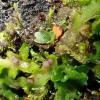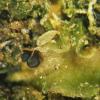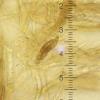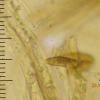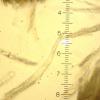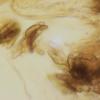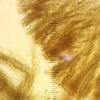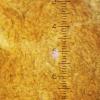
02-01-2026 17:43
MARICEL PATINOHi there, although I couldn't see the fruitbody, I

01-01-2026 18:35
Original loamy soil aside a artificial lake.The co

31-12-2025 19:27
Collected from loamy soil, at waterside (completel

30-12-2025 16:44
Pascal DucosBonjour,Une anamorphe rose stipitée, très nombre

30-12-2025 17:14
 Bernard CLESSE
Bernard CLESSE
Bonjour à toutes et tous,Pourriez-vous aider Albe
Whitish inoperculate on the liverwort Aneura pinguis
Edvin Johannesen,
25-03-2023 14:42
 I have received this dried specimen for microscopy. In the fresh state the apothecia are (purplish-greyish) white, but they become black in the dry state (see photos of both states). On rehydration they appear somewhat gelatinous, dark purplish brown.
I have received this dried specimen for microscopy. In the fresh state the apothecia are (purplish-greyish) white, but they become black in the dry state (see photos of both states). On rehydration they appear somewhat gelatinous, dark purplish brown.Hymenium is a brown, dense palisade. Excipulum is paler brown, I would say textura epidermoidea (?). Asci and spores appear dead. Mature spores are brown, 20 x 6 micr., ellipsoid/allantoid, aseptate or I suspect becoming 1-septate (hard to see). Asci IKI negative.
All micro images in water.
I have not been able to find any bryophilous inoperculates with such brown spores.
Any suggestions?
Georges Greiff,
29-03-2023 13:03
Re : Whitish inoperculate on the liverwort Aneura pinguis
Very interesting collection. I have not seen any inoperculates on liverworts with brown spores. It may well be undescribed. Bryoscyphus is superficially similar and seeing living paraphyses would have helped. Bryoscyphus conocephali agg. is on liverworts in similar habitats. It is not that but it might be related.
George
George
Edvin Johannesen,
29-03-2023 14:55

Re : Whitish inoperculate on the liverwort Aneura pinguis
Thanks for your opinion, Georges. I will have another attempt at looking for paraphyses (I doubt they will be alive). I assume that the spore color is not a result of necrosis or some other process?
Georges Greiff,
29-03-2023 15:19
Re : Whitish inoperculate on the liverwort Aneura pinguis
Dear Edvin,
I have not noted brownish spores in any of the herbarium material of Bryoscyphus that I have examined, but that doesn't mean it won't happen. The darkening of the dry, old apothecia is a common occurrence Bryoscyphus, including in B. conocephali I collected recently. Perhaps this pigment has gone into the spores. I can check if this darkening happens in spores of my B. conocephali.
Unfortunately the paraphyses will be dead so you won't see the VBs. Perhaps now only sequencing can place this collection with more certainty within one of the bryophilous Leotiomycete groups. They are tricky even when fresh.
All the best,
George
I have not noted brownish spores in any of the herbarium material of Bryoscyphus that I have examined, but that doesn't mean it won't happen. The darkening of the dry, old apothecia is a common occurrence Bryoscyphus, including in B. conocephali I collected recently. Perhaps this pigment has gone into the spores. I can check if this darkening happens in spores of my B. conocephali.
Unfortunately the paraphyses will be dead so you won't see the VBs. Perhaps now only sequencing can place this collection with more certainty within one of the bryophilous Leotiomycete groups. They are tricky even when fresh.
All the best,
George
Edvin Johannesen,
29-03-2023 15:40

Re : Whitish inoperculate on the liverwort Aneura pinguis
It would be great if you could check this - thanks!




